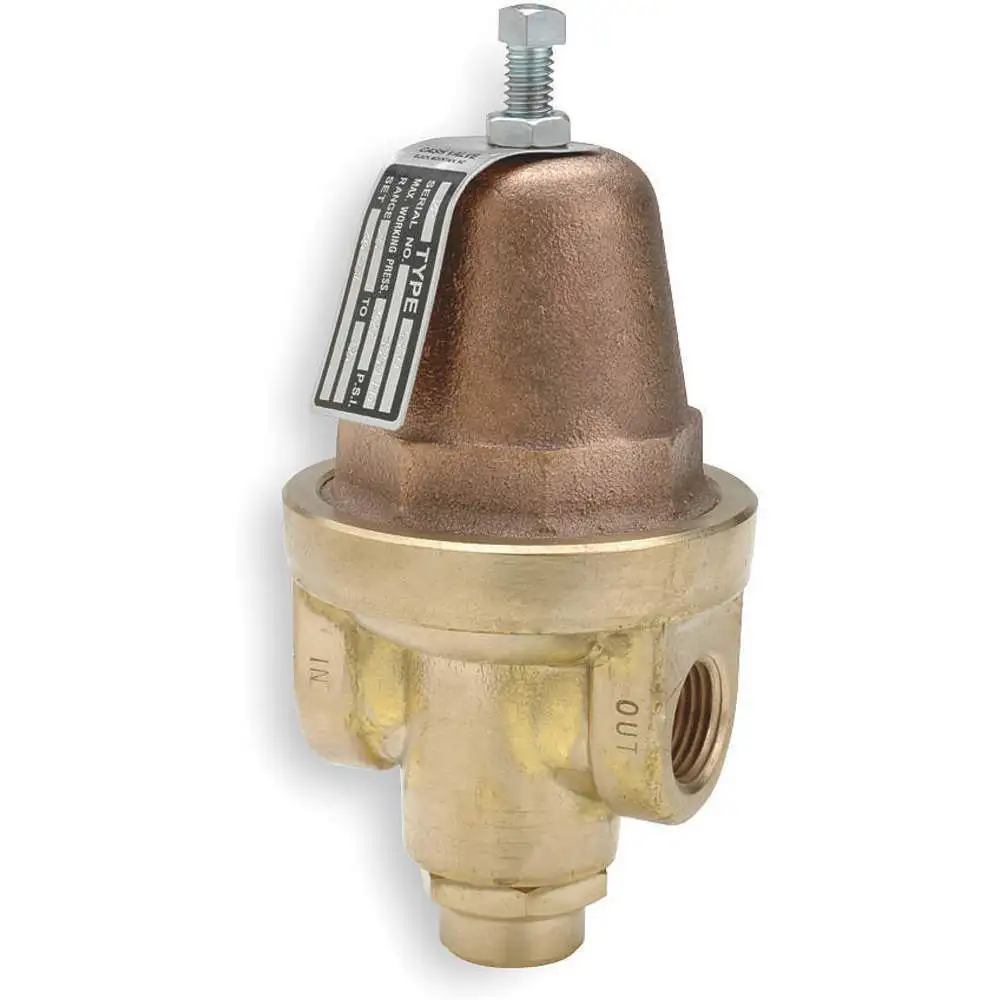Cash Valve 8275-0003MC pressure regulator is ideal for maintaining consistent fluid pressure in industrial applications, ensuring efficient and safe operations. It is used in systems involving steam, liquids or gases, such as HVAC, process control and manufacturing processes. Its design enables precise pressure control & reliable functionality, contributing to operational reliability and product quality in diverse settings.
Features:
- It has a pressure adjustment range of 0 to 5 psi for optimal performance.
- This pressure regulator comes with a convenient 1/4 inch inlet and outlet size for seamless integration into your industrial setups without hassle.
- It is capable of handling temperatures up to 180 degrees F and has a maximum pressure of 400 psi.
- This 0 to 5 psi pressure regulator features brass construction for enhanced durability and corrosion resistance.
Frequently Asked Questions:
Q. What is the difference between a pressure regulator and a relief valve?
A. A pressure regulator is a device that maintains a steady pressure in a system by controlling the fluid flow. It ensures that the pressure downstream remains within a specific range, even if the inlet pressure fluctuates. On the other hand, a relief valve is designed to release excess pressure from a system to prevent overpressure situations. When the pressure exceeds a certain threshold, the relief valve opens, allowing the fluid or gas to escape temporarily until the pressure returns to a safe level.
Q. What are the factors to be considered while choosing this pressure regulator?
A. Major factors include pressure range compatibility, fluid type, temperature range, flow rate, connection size, response time, accuracy, adjustability and installation orientation.
Q. What are the safety precautions to consider when installing this Cash Valve pressure regulator?
A.
- Ensure proper ventilation in the installation area to prevent the accumulation of hazardous gases.
- Release system pressure before installation to avoid sudden releases that could lead to injuries.
- Wear suitable personal protective equipment (PPE) like gloves and safety glasses during installation.
- Perform leak detection tests using methods like soap and water solution before and after installation.
- Securely mount the regulator to prevent vibrations or movement that might affect its performance.
- Install the regulator in the correct orientation as specified to avoid operational problems.
- Confirm material compatibility with regulated fluids or gases to prevent corrosion or reactions.
- Tighten all connections appropriately to prevent leaks or disconnections.
 Change Country
Change Country


